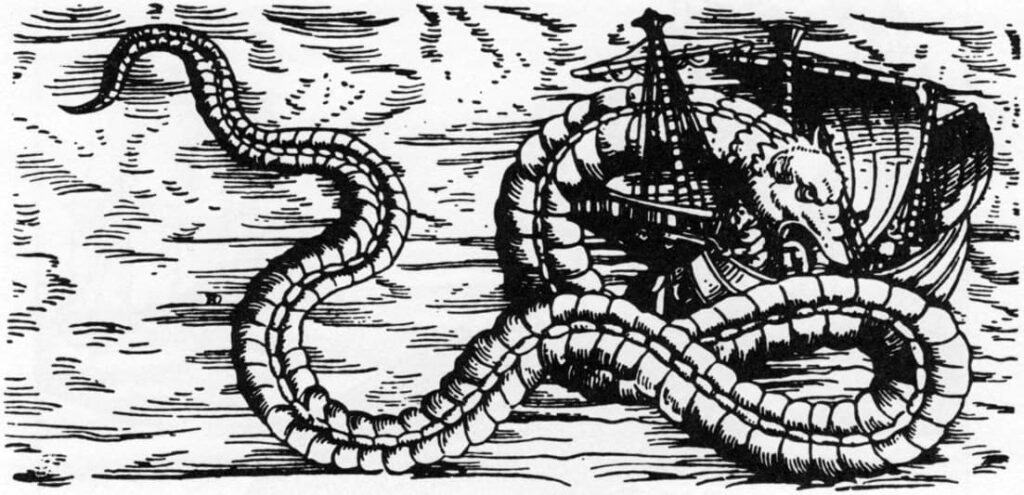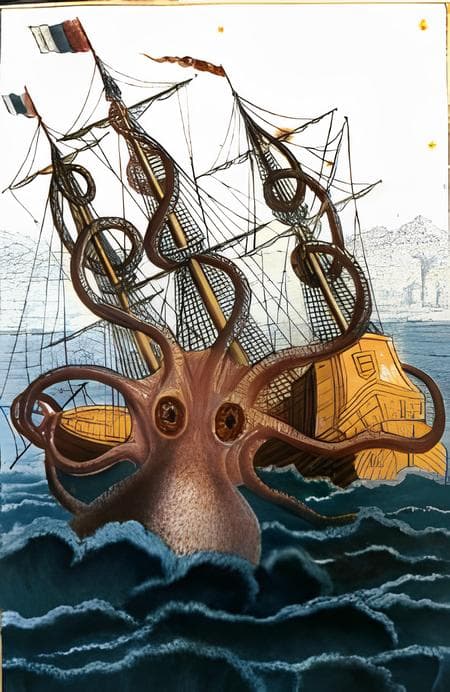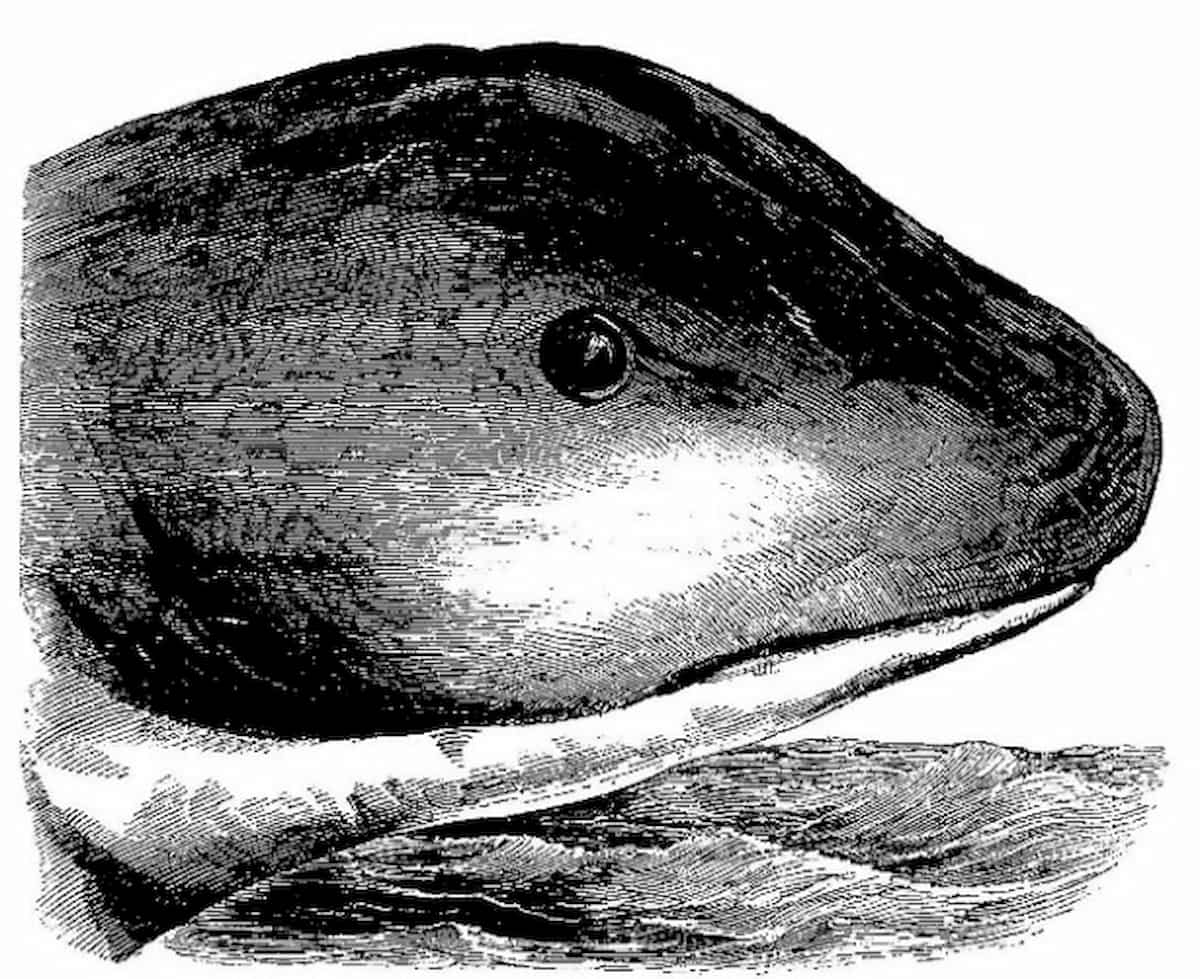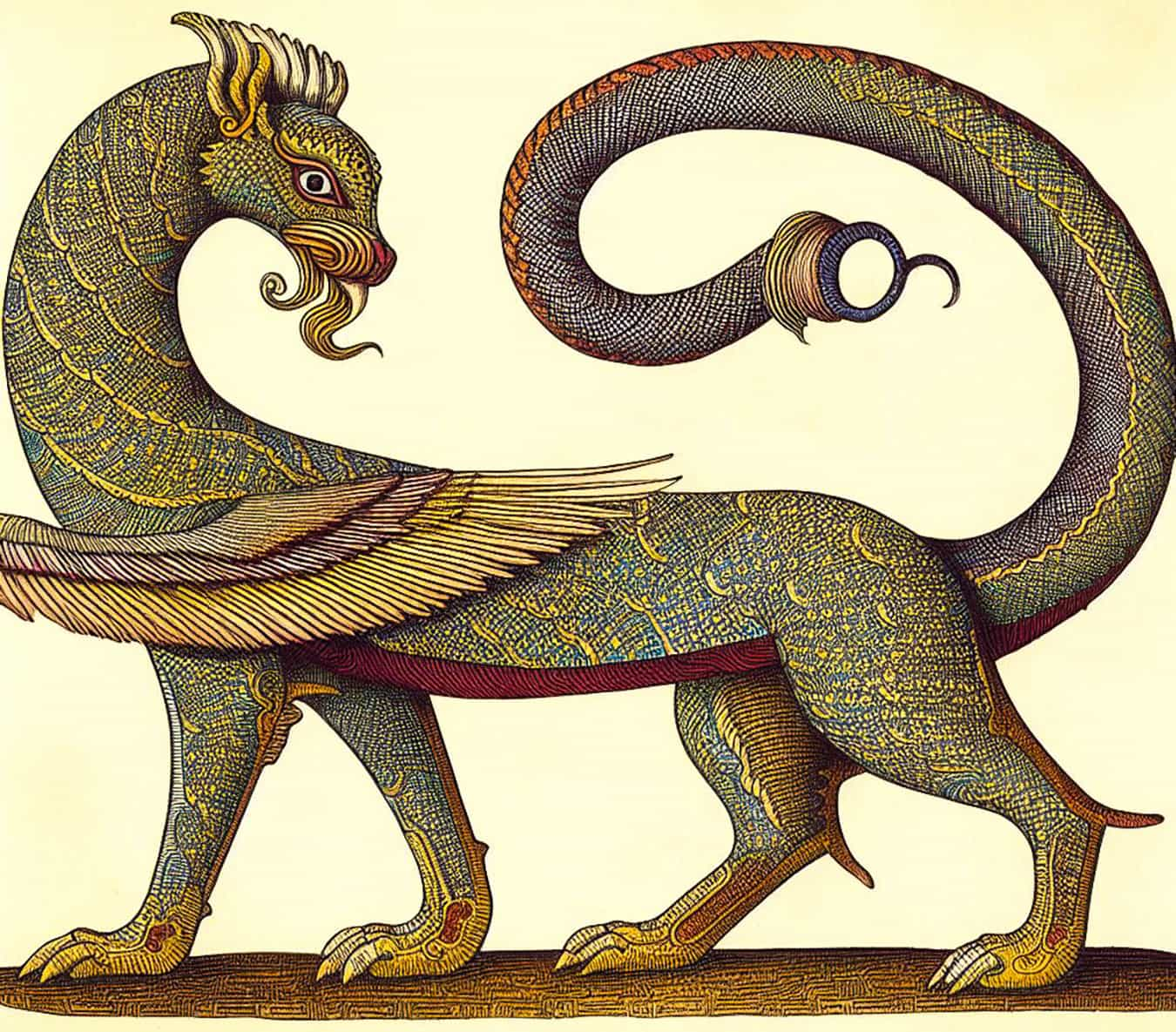The term sea monsters refers to mythical creatures living in the water. Many descriptions of sea monsters relate to beings whose existence has not been proven so far. However, some accounts can be attributed to exaggerated descriptions of creatures such as whales, devil rays, giant squids, or colossal squids. In comparison to other marine creatures, these marine monsters are often depicted as exceptionally large and hostile towards sailors. Historical accounts portray huge creatures attacking ships, devouring sailors, or spewing water.
Background of Sea Monsters
The origin of sea monster myths is often unknown. However, there are a multitude of written traditions, mostly from sailors, describing encounters with presumed sea monsters. The Swedish clergyman Olaus Magnus illustrated numerous sea monsters in his works Carta Marina and Historia de gentibus septentrionalibus in 1555, and later authors adopted his descriptions. For instance, Magnus’s sea monsters can also be found in Conrad Gessner’s significant work, Historia Animalium.
Some eyewitness reports of sea monsters can be traced back to exaggerated descriptions of real creatures such as whales or giant squids. Despite abundant and sometimes credible descriptions of creatures like sea serpents, their existence cannot be proven. Cadaver findings initially thought to be remnants of sea serpents were identified as the remains of giant sharks or oarfish.
Cryptozoology explores evidence for the existence of unproven species, such as sea monsters.
Historical Descriptions and Accounts of Sea Monsters

Certain historical sea charts like Carta marina or medieval encyclopedic works like Liber Floridus were adorned with depictions of sea monsters and dragons.
Reports from seafarers about such beings have persisted over long periods in different cultures.
In the Old Testament, Jonah is swallowed by a large fish. Avienus reports in his work Ora maritima about the Carthaginian sailor Himilco encountering “monsters from the depths” (Ora maritima 117-29). In 1555, Olaus Magnus described in his work Historia de gentibus septentrionalibus the “largest and most monstrous creature of the Indian Ocean.” It was about 330 feet long and “extremely cruel.” It attacked ships by spewing large amounts of water onto the ship and crew. Additionally, it attempted to capsize ships by throwing itself onto the bow or stern.
The crew of HMS Squirrel (1582) under Humphrey Gilbert allegedly sighted a lion-like monster with “glaring eyes” during their return from Newfoundland in 1583.
The “Apostle of the Greenlanders” Hans Egede describes in Det gamle Grønlands nye Perlustration in 1729 a huge water-spouting sea serpent that was said to have claws and a shell-covered skin. The monster was supposed to be three to four times longer than the ship and capable of rising far out of the water with its ends.

According to a captain’s letter published in 1852, the whaler Monongahela supposedly killed a giant sea serpent in the South Pacific. The creature was said to move through the water with undulating motions, be over 110 feet long, and have a long, flat head with sharp teeth. The remains of the described creature, along with the ship and crew, vanished without a trace.
In a 1919 article for National Geographic, John Oliver La Gorce describes how a devil ray supposedly grabbed the anchor chain of a ship with its tentacle horns and pulled the anchor chain, anchor, and ship out to sea. The description is considered unbelievable and is likely attributed to the limited knowledge of devil rays at that time.
Known Sea Monsters
Sea Monsters
- Cadborosaurus (“Caddy”)
- Cetus from the Perseus legend
- Leviathan
- Midgard Serpent (Jörmungandr)
- Giant Kraken
- Sea Serpents
- The Sirens from Homer’s Odyssey
- Scylla and Charybdis in Homer’s Odyssey
- Umibōzu
Monsters in the Inland Waters

In the myths and legends of many people, marine monsters appear in lakes and occasionally in rivers. One of the most famous monsters in an inland water body is the Loch Ness Monster. Other lake monsters include:
- Bessie
- Champ
- Igopogo
- Kelpies
- Kusshie
- Lagarfljót Worm
- Lariosauro, Lake Como
- Manipogo
- Morag
- Mokele-Mbembe
- Nahuelito
- Ogopogo
- Selma
- Storsjöodjuret
- Tota Lake Monster
From Literature to Pop Culture
- The Great White Shark
- Godzilla
- Moby-Dick
- Beings from the Cthulhu Mythos
Sea Monster: Fact or Fiction?
It is possible to designate a real marine creature with a frightening appearance, such as a whale, giant squid, or fish from abyssal fauna, as a “sea monster” – especially when they are stranded and distorted by decay. However, sea monsters are primarily part of collective imaginations, and many of them are imaginary.
Historically, the fear of sea monsters has gradually diminished with the emergence of marine biology, which identifies and studies marine organisms. Progress in this field has helped distinguish real species from fictitious ones, such as giant sea serpents, mermaids, water nymphs, etc.
Nevertheless, the study of sea monsters is not limited to the issue of the reality of their existence.
Disciplines like anthropology, mythology, and comparative mythology seek to contextualize these creatures within the broader framework of collective imaginations.
They attempt to understand the place and role these creatures play in the culture of a particular community at a given time. A sea monster like the bishop-fish, for example, is linked to the Christian imagination prevalent in the Middle Ages and the Renaissance, while the serpent Jörmungandr cannot be understood independently of the imagination specific to the Norse mythology to which it belongs.
Cryptozoology, a pseudo-science with highly contested value, focuses on the problem of the existence or non-existence of animals whose reality is not assured. This includes sea monsters like the famous Loch Ness Monster.






